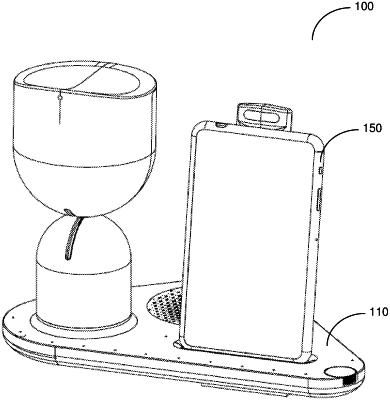| CPC B25J 11/001 (2013.01) [H04L 51/10 (2013.01); B25J 13/003 (2013.01); B25J 13/081 (2013.01); B25J 13/086 (2013.01); B25J 13/087 (2013.01)] | 12 Claims |

|
1. A social robot for performing emotional gestures to interact with a user, comprising:
a base of the social robot;
a controller operatively coupled to the base and configured to receive inputs from a plurality of sensors;
a first body portion pivotally connected to the base, the first body portion further comprising a first aperture;
an electro-mechanical member disposed within the first body portion and connected to the controller; and
a second body portion connected to the electro-mechanical member, the second body portion further comprising a second aperture;
wherein the electro-mechanical member is configured to extend from the first body portion through the first aperture to the second body portion through the second aperture;
wherein the electro-mechanical member further comprises an arm and a spring system coupled to an electric motor, wherein the spring system is structured to allow for smooth movements of the arm and the second body portion; and
wherein the controller is configured to control movements of the electro-mechanical member and the first body portion based on the inputs from the plurality of sensors, so that the electro-mechanical member enables motion of the second body portion with respect to the first body portion initiating emotional gestures.
|